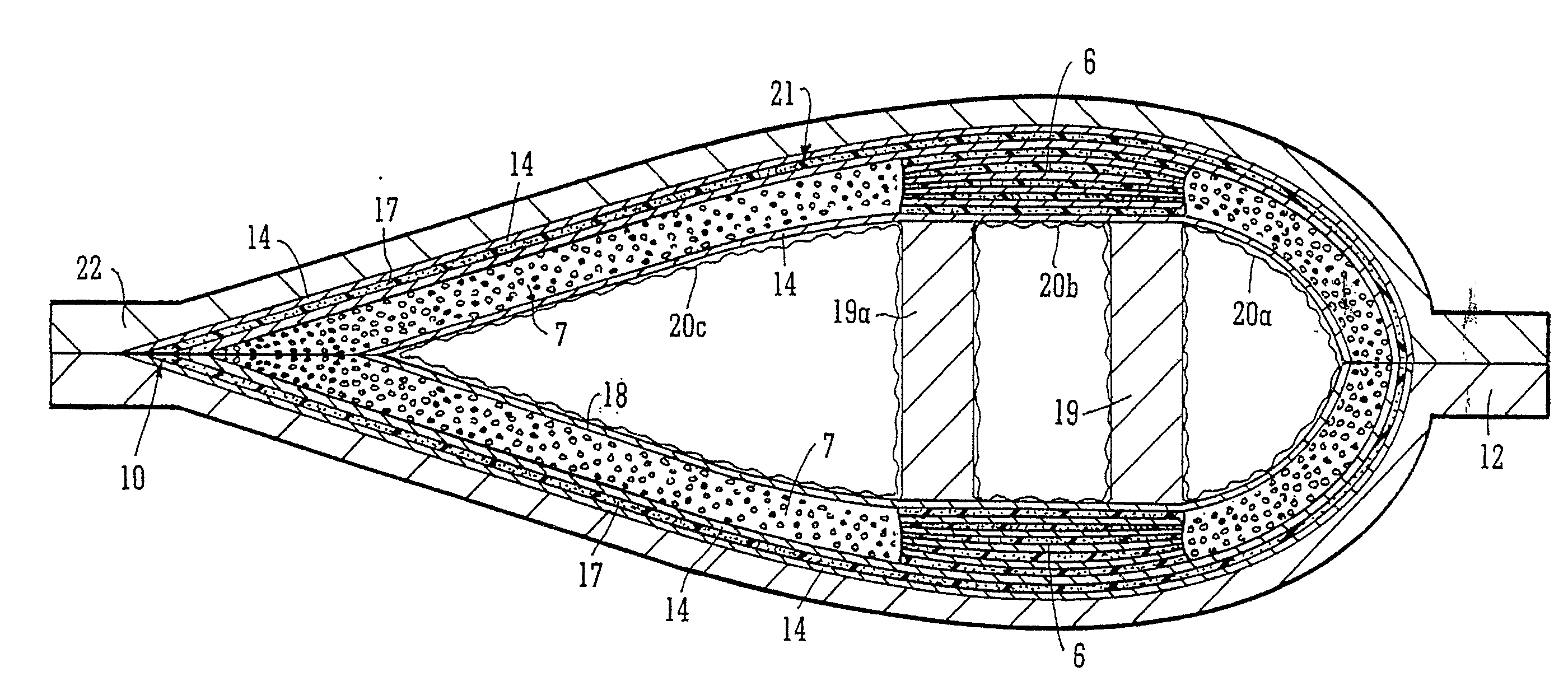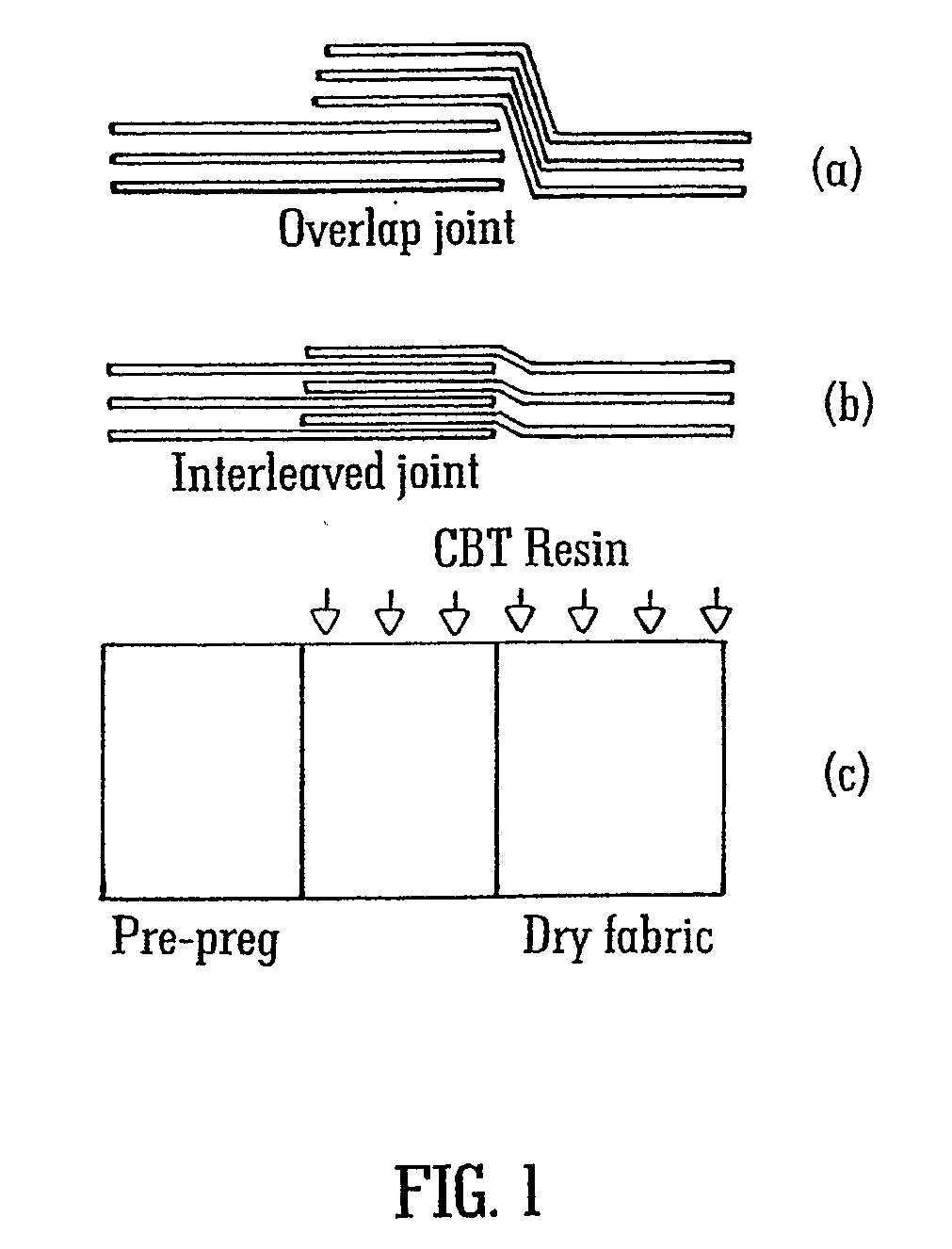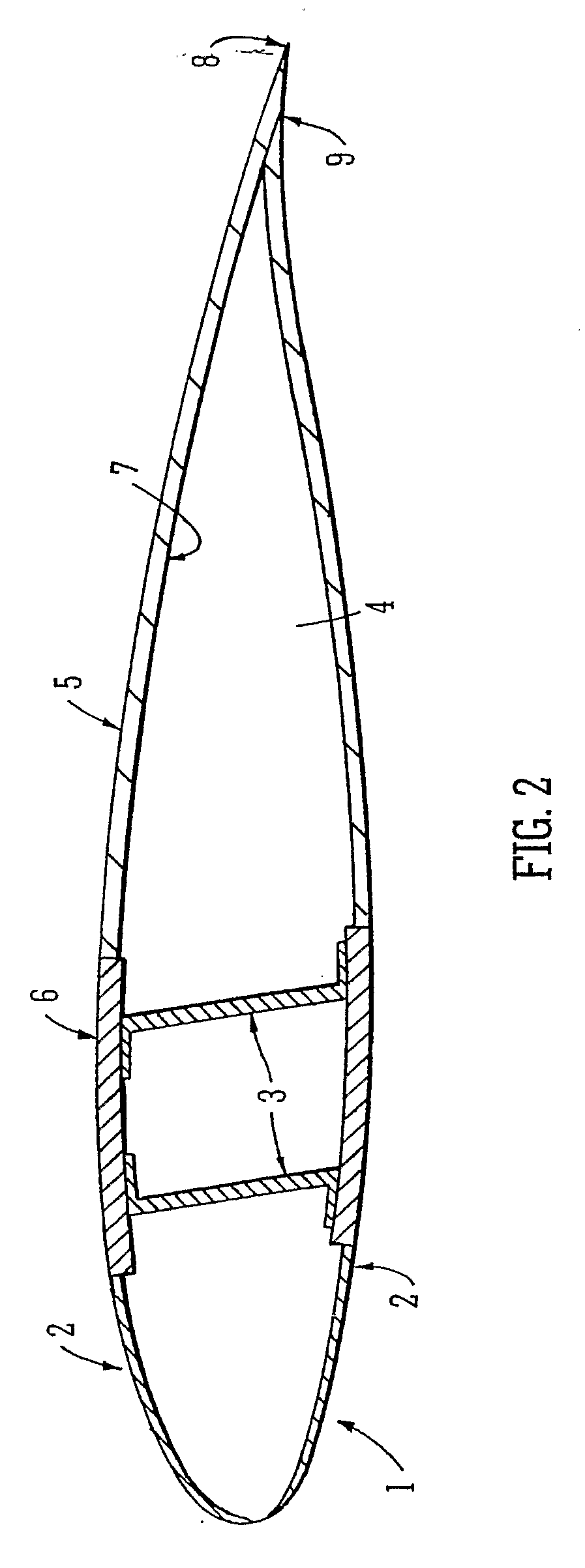Composite Articles Comprising In-Situ-Polymerisable Thermoplastic Material and Processes for their Construction
a thermoplastic material and composite article technology, applied in the field of composite articles, can solve the problems of difficult control of laminate quality, inability to integrate the article, and inability to meet the intended end-use so as to increase the damage tolerance of the composite article, increase environmental resistance, and increase the effect of fibre volume fraction
- Summary
- Abstract
- Description
- Claims
- Application Information
AI Technical Summary
Benefits of technology
Problems solved by technology
Method used
Image
Examples
example
[0139]The following example demonstrates the manufacture of a section of a CBT thermoplastic composite wind turbine blade. It will be appreciated that the process described can also be used to manufacture a whole thermoplastic composite wind turbine blade in a one-shot process. The skilled person will appreciate that blades or blade sections of various sizes could be manufactured using the process according to the invention.
[0140]To demonstrate the process of manufacturing a glass reinforced CBT wind turbine blade, a 4 metre long centre section of a 12.6 m blade was produced. The centre section was manufactured on a high temperature composite tool. This demonstration shows the process that can be used for the entire blade, of any size in length. The following stages were involved in the production of the blade section:[0141]Material Preparation[0142]Tool preparation[0143]Lay-up support[0144]Material lay-up[0145]Heating cycle
[0146]FIG. 2 shows a cross section of a blade section obtai...
PUM
| Property | Measurement | Unit |
|---|---|---|
| temperature | aaaaa | aaaaa |
| length | aaaaa | aaaaa |
| length | aaaaa | aaaaa |
Abstract
Description
Claims
Application Information
 Login to View More
Login to View More - R&D
- Intellectual Property
- Life Sciences
- Materials
- Tech Scout
- Unparalleled Data Quality
- Higher Quality Content
- 60% Fewer Hallucinations
Browse by: Latest US Patents, China's latest patents, Technical Efficacy Thesaurus, Application Domain, Technology Topic, Popular Technical Reports.
© 2025 PatSnap. All rights reserved.Legal|Privacy policy|Modern Slavery Act Transparency Statement|Sitemap|About US| Contact US: help@patsnap.com



